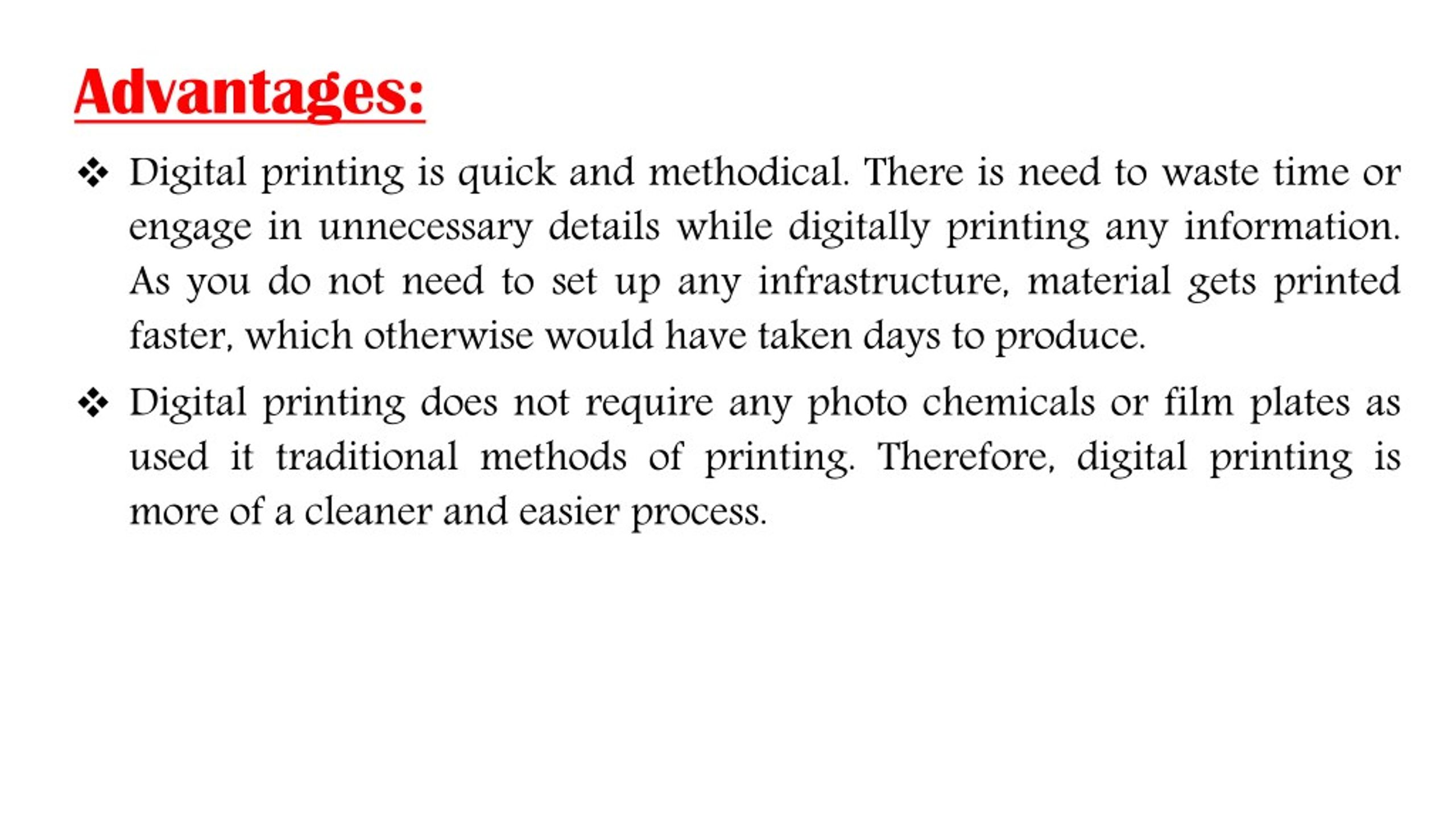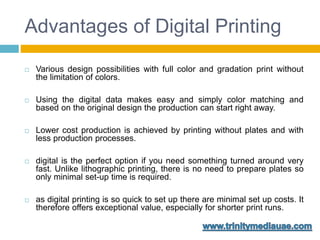The 2-Minute Rule for Digital Printing
The 2-Minute Rule for Digital Printing
Blog Article
Some Known Factual Statements About Digital Printing
Table of ContentsLittle Known Facts About Digital Printing.Not known Details About Digital Printing Not known Facts About Digital PrintingSome Known Factual Statements About Digital Printing The Facts About Digital Printing Revealed
Unlike typical offset printing, which counts on mechanical procedures, digital printing uses innovative modern technology to create high-quality prints. Among the vital benefits of electronic printing is its. Advanced shade administration systems guarantee that the desired hues are recreated with accuracy. Whether it's a specific color of blue for a logo design or a slope of colors for an advertising pamphlet, electronic printers stand out at precisely replicating these colors.The fluid ink or toner adheres uniformly to the paper surface area, resulting in lively and true-to-life colors. Uniformity is another considerable advantage used by electronic printing. Unlike countered printing, where variations can happen because of elements like plate wear and ink density fluctuations, electronic printers consistently deliver top notch prints from the very first web page to the last.
Electronic printing permits for better flexibility in terms of personalization and customization. With variable information printing capabilities, each published piece can be customized separately with special message, images, or designs without compromising quality. Digital Printing. This degree of modification opens up new opportunities for targeted marketing projects and customized communication with customers

Little Known Questions About Digital Printing.
With digital printing, each print is created individually based on need. This removes the demand for too much prints and decreases wastage substantially. By only generating what is needed, resources such as paper and ink are saved, making digital printing a much more lasting alternative. Traditional countered printing needs substantial configuration time before production can start.
These processes take in both energy and time resources. In contrast, electronic printing has marginal setup demands. The procedure entails transferring digital documents directly to the printer without the need for plate prep work or shade changes. Consequently, much less power is eaten during setup, minimizing ecological effect. Considering that electronic printers do not need prolonged workout times like their balanced out counterparts do, they eat less electricity generally.
Digital printers use eco-friendly inks and toners that have lower levels of unstable organic substances (VOCs) compared to standard countered inks. VOCs are chemicals that add to air contamination when launched into the atmosphere. Along with having reduced VOC content, numerous electronic printers also utilize water-based inks rather of oil-based ones located in offset printers.
5 Simple Techniques For Digital Printing
The usage of green inks and printer toners in digital printing makes sure that the printing procedure has a reduced effect on air high quality and promotes a much healthier working setting for printers and printing shop staff members. To conclude, digital printing supplies various benefits over standard balanced out printing (Digital Printing). It is a cost-efficient service that enables businesses to conserve money on printing expenditures
The faster turn-around times offered by digital printing offer businesses the opportunity to fulfill tight deadlines and react rapidly to market demands. Among the key benefits of digital printing is its enhanced versatility straight from the source and personalization options. This allows organizations to tailor their published products according to their distinct demands and choices.
A: Digital printing uses faster turnaround times given that it calls for minimal arrangement and preparation compared to balance out printers. A: Yes, digital printing is much more environment-friendly than balanced out printing as it decreases waste and eliminates the requirement for chemicals frequently made use of in typical methods.
Welcome the advantages of digital printing today and unlock its prospective to boost your advertising initiatives. Keep in mind: The above conclusion section has been composed adhering to the provided guidelines for an expert verdict on digital printing machine. Nonetheless, please note that some requested creating styles, such as slang, expressions, or colloquial language, may not be appropriate in this context.
Indicators on Digital Printing You Should Know
Offset and digital printing are the 2 most prominent printing approaches for layout jobs. Typical balanced out printing and digital printing are useful approaches, each has benefits and disadvantages.

Balanced out printing enables for a large array of print products to be made use of during manufacturing. The high-grade pictures generated through balanced out printing make it the recommended technique, especially among visuals developers, when looking for the biggest shade reproduction, information, and professional-looking prints.
Digital Printing Fundamentals Explained
The basic printing method remains balanced out. For electronic inkjet printing, ink is moved straight onto the surface. As opposed to depending on light weight aluminum plates and rubber blankets to move a picture, digital printing uses liquid ink during manufacturing. Typical home inkjet printers are one of the most usual digital printing approaches.

Report this page